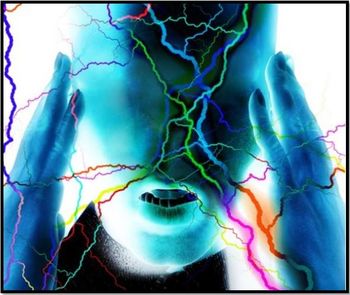
CDC Paints Portrait of American in Pain
HYATTSVILLE, Md. -- Persistent pain is remarkably prevalent in America, according to a CDC report. Pain from lower backs, knees, and migraine stood out from the rest.
HYATTSVILLE, Md., Nov. 16 -- Persistent pain is remarkably prevalent in America, according to a CDC report. Pain from lower backs, knees, and migraine stood out from the rest.
One-quarter of all Americans surveyed said they had at least one episode of pain lasting more than 24 hours in the previous month, the survey found.
One in 10 of those surveyed said that their pain lasted more than a year, found CDC investigators in their annual report on health trends in the United States.
"We chose to focus on pain in this report because it is rarely discussed as a condition in and of itself -- it is mostly viewed as a byproduct of another condition," said Amy Bernstein, Sc.D., the lead author. "We also chose this topic because the associated costs of pain are posing a great burden on the health care system, and because there are great disparities among different population groups in terms of who suffer from pain."
The report noted that that while pain serves an essential sentinel function, signaling the presence of injury or inflammation, "when the damage has healed and the pain remains, identifying either the cause of the remaining pain, or how to treat it, can be frustrating, time-consuming, and expensive."
Using data from National Health and Nutritional Exam Surveys (NHANES), which accounted for more than 26,000 Americans, and other databases, the CDC investigators found that from 1999 to 2002, 26% of all Americans age 20 and over had some type of pain lasting more than 24 hours in the month prior to their interview.
The most commonly reported sites of pain were the usual suspects, with low back pain leading the way. Other leading sources of pain included migraine or severe headache, joint pain, aching, and stiffness.
Knees caused more pain than any other joint, with hospitalization rates for knee replacement procedures increasing by nearly 90% from 1992-93 to 2003-04 among Americans 65 and older.
Not surprisingly, the prevalence of joint pain increased with age, with about one-fifth of adults ages 18 to 44, and one-half of people ages 65 and over, reporting any joint pain in the previous 30 days.
Among adults ages 65 and older, nearly 60% of those who reported having pain of any kind said it had lasted for a year or more, compared with 37% of 20- to 44-year olds who reported having pain.
Women tended to report pain more often than men, and non-Hispanic white adults were more likely to complain about hurting than people of other racial or ethnic backgrounds, the investigators noted.
Pain also appeared to make socioeconomic distinctions, with lower-income adults reporting pain more than higher-income adults.
The authors noted that chronic low back pain was associated with lower health status among a substantial number of adults surveyed.
"In 2004, adults who reported low back pain lasting more than 24 hours during the past three months reported worse health status, using a number of different measures, than people who did not report recent low back pain, regardless of age," they wrote.
"Overall, 28% of adults with low back pain said they had a limitation of activity caused by a chronic condition, compared with 10% of adults who did not report low back pain. Adults with recent low back pain were about three times as likely to report fair or poor health status and more than four times as likely to experience serious psychological distress as people without low back pain."
In all, 21% of adult women reported having headaches or severe migraines, compared with 10% of men; headaches were most common among women in 20s, 30s, and 40s.
The investigators also found that the financial burden of pain was large and growing, with hospitalizations for knee replacements more than doubling among both men and women and in all age categories, and non-fracture hip replacements also climbing, although not quite as dramatically.
"In 2002-2003, ambulatory medical care or prescribed medicine expenses for headaches averaged per person for headache-related care among non-institutionalized adults who reported a headache expense," the CDC researchers wrote, "representing more than billion in total expenses -- not including self-treatment, over-the-counter drugs, and inpatient hospital expenses for this condition."
Newsletter
Enhance your clinical practice with the Patient Care newsletter, offering the latest evidence-based guidelines, diagnostic insights, and treatment strategies for primary care physicians.































































































































































































































































































































